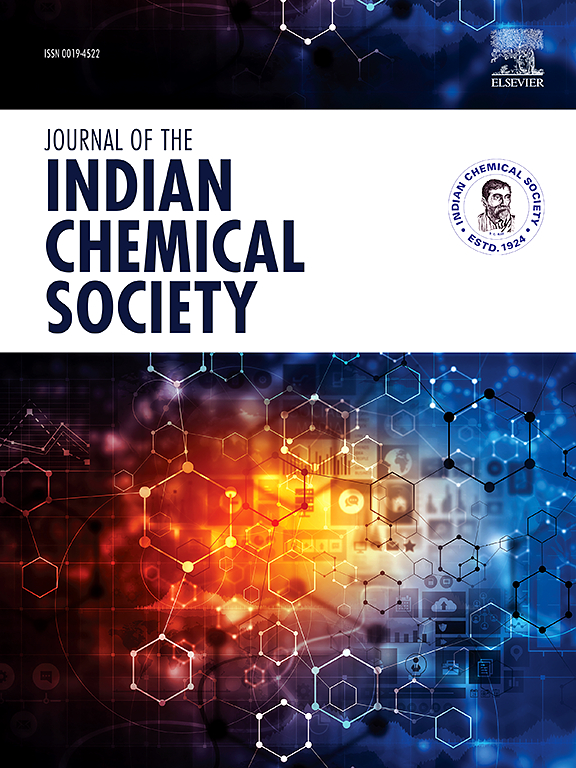Au5-x-yAgxCuy [x, y = 1, 3] 三金属纳米团簇对 CO 和 O2 的吸附研究
IF 3.2
4区 化学
Q2 CHEMISTRY, MULTIDISCIPLINARY
引用次数: 0
摘要
在本研究中,我们重点研究了不同三金属纳米团簇对 CO 和 O2 气体的吸附。在所有三金属纳米簇中,铜占据了四个配位位点,且几乎呈平面状。一氧化碳(CO)在这四个配位位点上的吸附极大地改变了所有三金属纳米簇的结构。所有三金属纳米团簇对一氧化碳的吸附趋势分别是铜、金和银。金的异常行为是由于相对论效应造成的。相对论效应破坏了 d 轨道和 s 轨道的稳定性。失稳的 d 轨道增强了π-背键。与 CO 不同,O2 吸附在 4 个配位的 Cu 位点上不会像 CO 吸附在 4 个配位的 Cu 位点上那样使纳米簇的几何形状发生剧烈变化。相反,CO 在这些纳米团簇上的吸附方式是一个原子吸附在另一个原子之上(μ1η1-atop 模式),而 O2 则表现出三种成键桥接模式,即顶部模式(-μ2η2 或 μ2η1 - 桥接模式或 μ1η1-atop 模式)。本文章由计算机程序翻译,如有差异,请以英文原文为准。
![Adsorption study of CO and O2 on Au5-x-yAgxCuy [x, y = 1, 3] trimetallic nanoclusters](https://img.booksci.cn/booksciimg/2024-11/99295234501762284259.jpg)
Adsorption study of CO and O2 on Au5-x-yAgxCuy [x, y = 1, 3] trimetallic nanoclusters
In present study, we focus on adsorption of CO and O2 gases over different trimetallic nanocluster. Among all trimetallic nanoclusters, copper occupied four coordinated sites and found to be nearly planer. The adsorption of carbon monoxide (CO) at these four coordinated sites drastically changes the structure of all the trimetallic nanoclusters. The adsorption trend of CO followed by all trimetallic nanoclusters is copper, gold and silver respectively. The anomalous behaviour arises due to the relativistic effect in the case of gold. The relativistic effect destabilizes the d-orbital and s-orbital. The destabilized d-orbital enhances the pi-back bonding. Unlike CO, the O2 adsorption at four coordinated Cu-sites does not bring as drastic changes in the geometry of the nanocluster as it in the case of CO adsorption at 4-coordinated Cu-site. In contrast, CO adsorbs on these nanoclusters as one atom on top of another (μ1η1-atop mode), whereas O2 exhibits three types of bonding-bridging mode, atop mode (-μ2η2 or μ2η1 - bridging mode or μ1η1-atop mode).
求助全文
通过发布文献求助,成功后即可免费获取论文全文。
去求助
来源期刊
CiteScore
3.50
自引率
7.70%
发文量
492
审稿时长
3-8 weeks
期刊介绍:
The Journal of the Indian Chemical Society publishes original, fundamental, theorical, experimental research work of highest quality in all areas of chemistry, biochemistry, medicinal chemistry, electrochemistry, agrochemistry, chemical engineering and technology, food chemistry, environmental chemistry, etc.

 求助内容:
求助内容: 应助结果提醒方式:
应助结果提醒方式:


